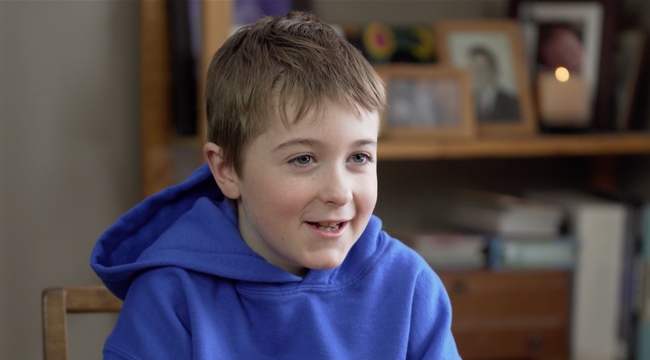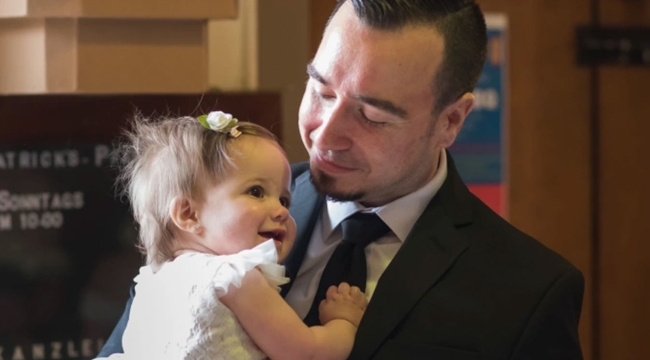How an Indigenous stem cell donor saved a life on Canada’s opposite coast

Veronica, who is Mi’kmaw from Cape Breton, was a stem cell match for Judee, a woman of Métis heritage on Vancouver Island
Veronica Marshall-Bernard’s donation journey began with a poster tacked to a workplace bulletin board.
It was 2006, and Veronica was a 26-year-old youth worker in Eskasoni, a large Mi’kmaw community on Cape Breton Island, N.S. The poster was a call for people to donate blood. Veronica recalls it had a photo of a little girl, with the story of why she needed blood to survive.
The appeal moved her. Not only did she have four young children of her own at the time, but she knew what it was like to lose loved ones. Her mother, three of her sisters, a brother and a nephew had all died before her twentieth birthday, at different times and in very tragic circumstances.
She quickly booked her first appointment to donate blood.
“I thought, ‘this is me doing my part. This little poster is not going to bother me now,’” Veronica remembers. “Instead of me being like ‘oh, that’s so sad,’ I was like, ‘I have a plan, I’m going to donate blood, and that’s my solution.’”
But what sounds like an ending was really just the start. Veronica continued donating blood, and became a volunteer at blood drives. And while she was on Canadian Blood Services’ website that first time, she also spotted a dropdown menu for the stem cell registry.
What are stem cells? And how does the stem cell registry help?
Stem cells are produced in bone marrow, a spongy tissue in the centre of large bones. At any given time, hundreds of people in Canada are waiting for stem cell transplants, and it’s usually a matter of life and death.
Since most won’t have a matching stem cell donor in their family, they’ll need a volunteer donor from Canadian Blood Services’ Stem Cell Registry. There, they are more likely to find a stem cell match in a person of similar ancestral background. This is why Canadian Blood Services needs people of all backgrounds, including many more of Indigenous ancestry, to help us build a more diverse donor base.
Veronica requested the free kit to join. Then, like so many others, she waited.
- VIDEO: Completing the swab kit to join the stem cell registry (1:10)
- Thinking of joining the stem cell registry? Here’s what happens after you swab
Chance to help with stem cells ‘bigger than I realized’

Fast forward eight years, and Veronica had moved to another position as a social worker in Eskasoni. She came back from lunch one day to hear Canadian Blood Services had called several times, trying to reach her. Then her cell phone rang.
“It was a nurse. She asked me if I remembered joining the registry,” Veronica recalls. “Then she said, ‘I’m calling to tell you that you might be a match.’”
Veronica was definitely surprised and had a few questions, but she was ready to help. By this point, helping others was an even bigger part of her life and identity. Since joining the stem cell registry, she’d lost a second brother to suicide, and one of the ways she’d coped was by seeking more education and opportunities to support people in crisis.
“The common thread throughout the last 20 years is community and healing,” says Veronica. “I care a lot. I love a lot.”
Today, in addition to being a proud grandmother, Veronica is a clinical therapist based in Potlotek First Nation — where her late father was a social worker — as well as co-vice president of a national association for suicide prevention. With the losses she’s endured, “I could be of many minds,” she says, “but I try to channel a lot of that into doing good.”
The stem cell donation experience
The first step to donating stem cells was a round of blood tests. Canadian Blood Services arranged these at a hospital in nearby Sydney, N.S., where the nurses seemed thrilled to meet a stem cell donor-to-be. One of them remarked to Veronica that her match must feel as if they’d won the lottery. As the nurses argued good-naturedly over which of them would do the blood draw, “I began thinking this was bigger than I realized,” Veronica remembers.
Her husband and children were also happy for her to donate stem cells, but she did face pressure from other family and friends who worried she was risking her own health.
“If you know someone’s drowning in front of you, and they have their hand outstretched, are you going to just let them drown?” she remembers asking her dad. She was grateful that when he took her to the hospital in Halifax on donation day, one of the nurses took time to explain the process “and told him how special this was.”
Veronica spent the night in Halifax after donating and headed back to Cape Breton the following day, feeling good. By then her dad’s feelings had shifted from fear to pride. “He ended up being one of my biggest supporters afterward,” she says.
‘My name is Judee and you saved my life’

Even though she’d given permission to be contacted, Veronica didn’t know if she’d ever hear from the person who received her stem cells. But shortly after the end of the mandatory one-year waiting period, she was in Calgary for some training when an email landed in her inbox.
At first she thought it was spam. Then she saw the words: “My name is Judee Bowman Reid and you saved my life.” The writer included a photo, and details of her battle with a blood cancer called follicular lymphoma.
Completely forgetting how late it was with the time difference, Veronica dialed her husband, Ty, in Nova Scotia.
“Finally he answered, and I’m crying my head off,” Veronica says. “I couldn’t even get the words out. I was trying to collect myself to read it to him. And then he was like, ‘You did it. You saved someone’s life.’”
A friendship blooms between a stem cell donor and recipient

Since Judee lived across the country on Vancouver Island, she and Veronica first became friends over telephone, email and text, while their families also connected on social media.
When they first started getting to know each other, Judee was in her mid-60s. She was married and had three grown children, including one Veronica’s age. She’d also enjoyed good health for most of her life. The first sign of trouble had been “feeling really unwell” after a trip to Mexico in 2011.
“I thought maybe I just picked up a bug there,” Judee recalls.
When she finally got a diagnosis several months later, it was dire. Not only did she have cancer, but it was advanced.
“I had three chemo programs over the next three years,” Judee says, none of which put the cancer in remission for very long.
Her only option was a stem cell transplant. Initially, she hoped for a stem cell match in her family. She’d been adopted as a baby, but discovered her Métis heritage as an adult and connected with both sides of her birth family.
“I sent word out to them, and they were tested, but there was nothing, there was no match,” she says.
And even after the stem cell registry had identified a match in Veronica, it hadn’t exactly been smooth sailing. At one point, the transplant was called off because Judee’s health was deemed too precarious.
Veronica remembers that setback, too, because her donation was cancelled at the same time. And it came as a shock. Since the tests to confirm her as a donor, she'd been focused on her own diet and health, hoping to give her recipient the best shot at recovery. Now she feared they would die.
“I was really devastated,” she says. “I’d thought ‘we’re going to do it, and this person is going to be OK.’”
So a country apart, both had been hugely relieved when the procedure was rescheduled some weeks later. Unfortunately, while Veronica went right back to work after donating, Judee’s recovery from transplant was rockier. She developed sepsis, an extreme response to infection that was life-threatening, and an ongoing complication called graft-versus-host disease. But today, as she approaches the ten-year anniversary of the stem cell transplant, she is deeply grateful to be alive.

‘She’s been a delight to my life’
In September 2022, Judee and Veronica finally got to meet in person. Veronica spent a week at Judee’s home near Duncan, B.C.
“It was just great to meet her. She’s been a delight to my life, and a reason for my life,” says Judee. “I’m very attached to her.”
Veronica has many wonderful memories of that trip as well. Seeing Judee’s beautiful coastal community, and being surprised by how much it felt like home; discovering their shared love of thrifting; walking arm in arm with Judee and her niece at an outdoor market; and Judee’s heartfelt “I don’t want you to go, girl!” as the visit came to an end.
“We had this connection like nothing I’ve ever experienced,” says Veronica, who spent another few days with Judee in Calgary the following year. “I feel like she’s the future of me in 30 years. Similar humour, her interests, everything.”

They can’t help but wonder about a shared past, too — the genetic mixing over generations that led to the two of them being born a match. But mostly they are just grateful to have found each other. Combined, people of First Nations, Métis and Inuit descent make up less than two per cent of all those listed on the stem cell registry. For Judee, it feels like a miracle that Veronica was one of them — giving her the chance to meet a great grandson, travel with her husband, and spend more summers looking after the garden that is one of her great joys.
“I’m just living my life and looking to the future, and staying close with Veronica because she is my savior,” Judee says. “Thankfulness is what I have, and the belief in — well, the sheer luck of having everything happen.”
That it worked out feels just as miraculous to Veronica, who has also learned the fragility of life and health through hard experience.
“Had anything happened to me, or if I wasn’t that healthy to do the donation, poor Judee probably wouldn’t be here,” she says. “I’m aware of that.”
In donating, Veronica feels as if she received a gift as well as gave one. Saving Judee could never erase the loss and grief she and her family have endured, but it’s added new meaning to the struggle to move through them.
“This is probably one of the most uplifting things in my life that I’ve gone through up to this point,” she says.


